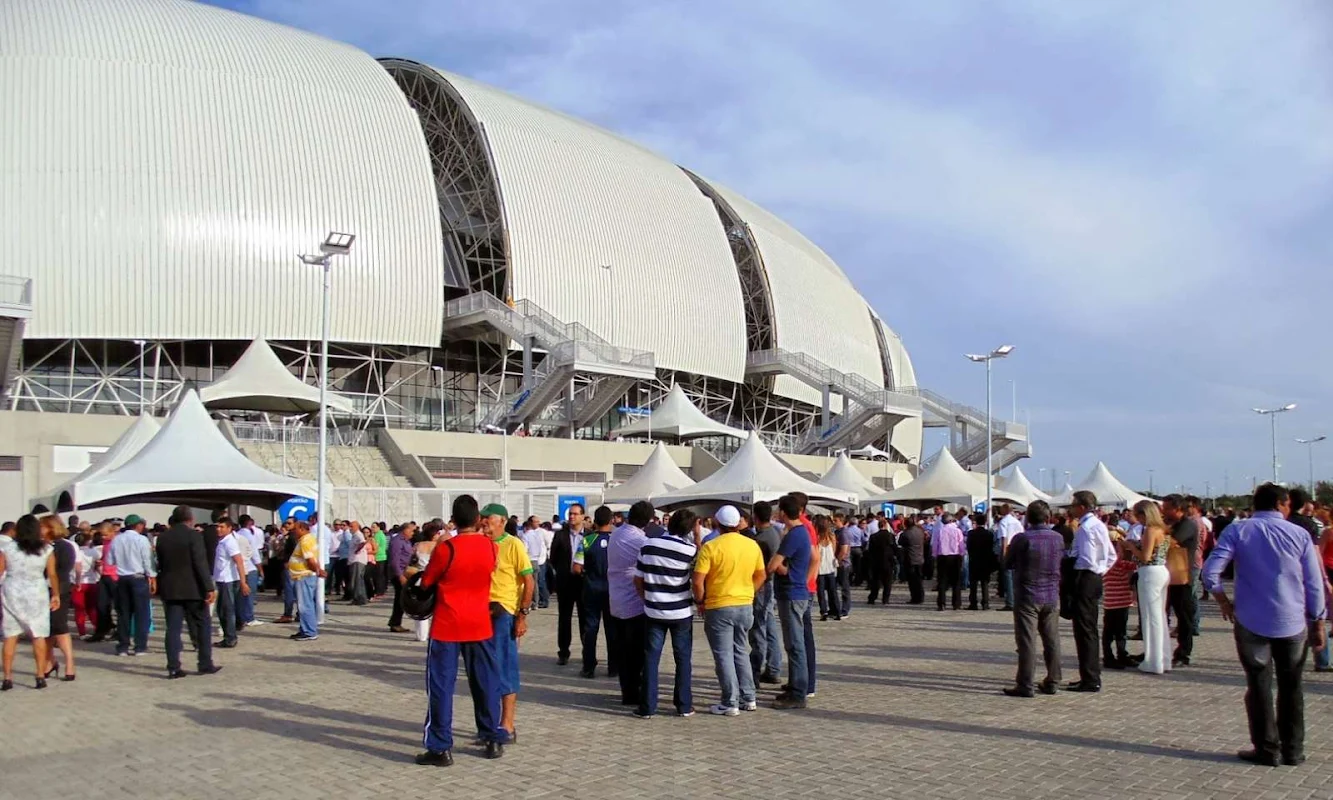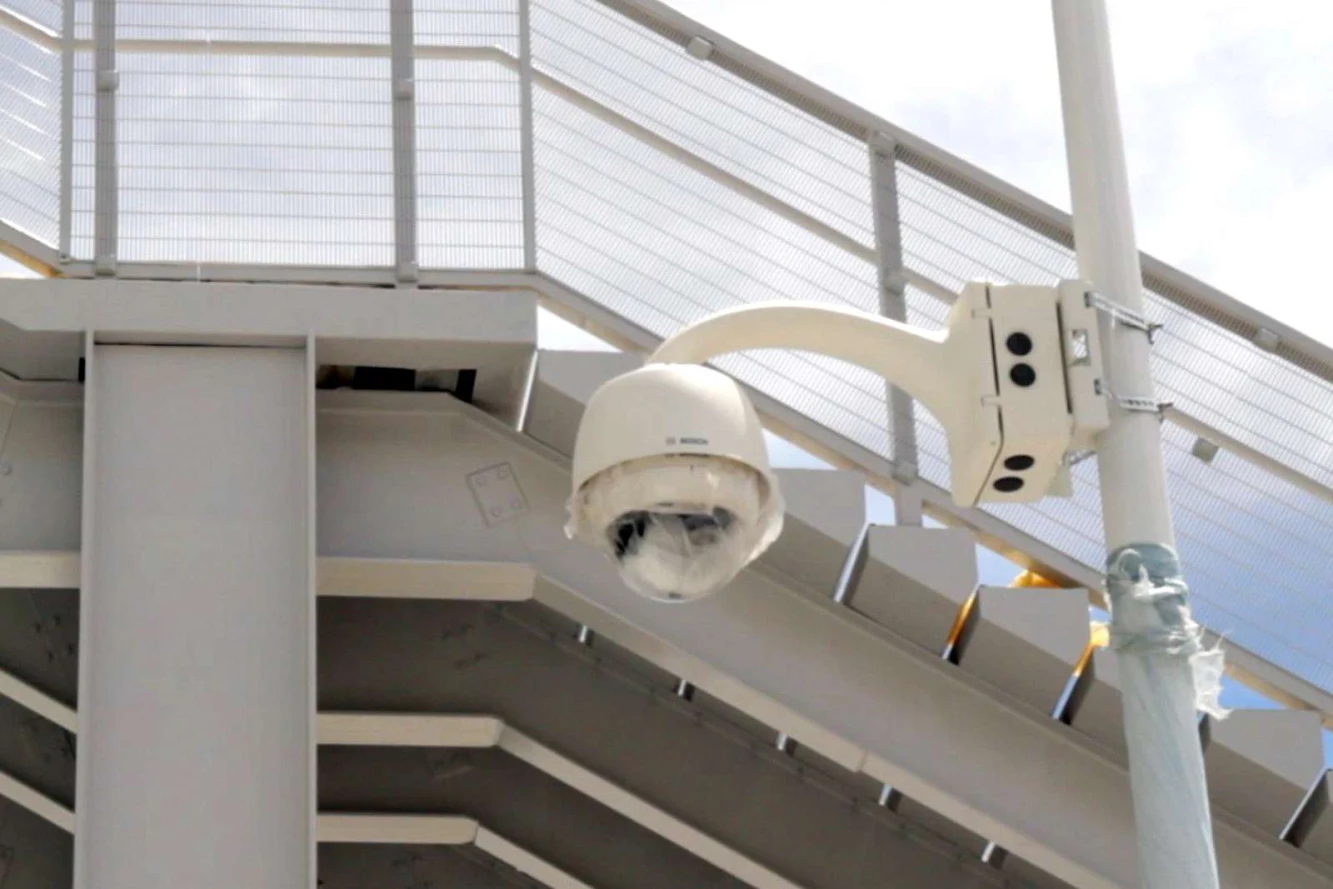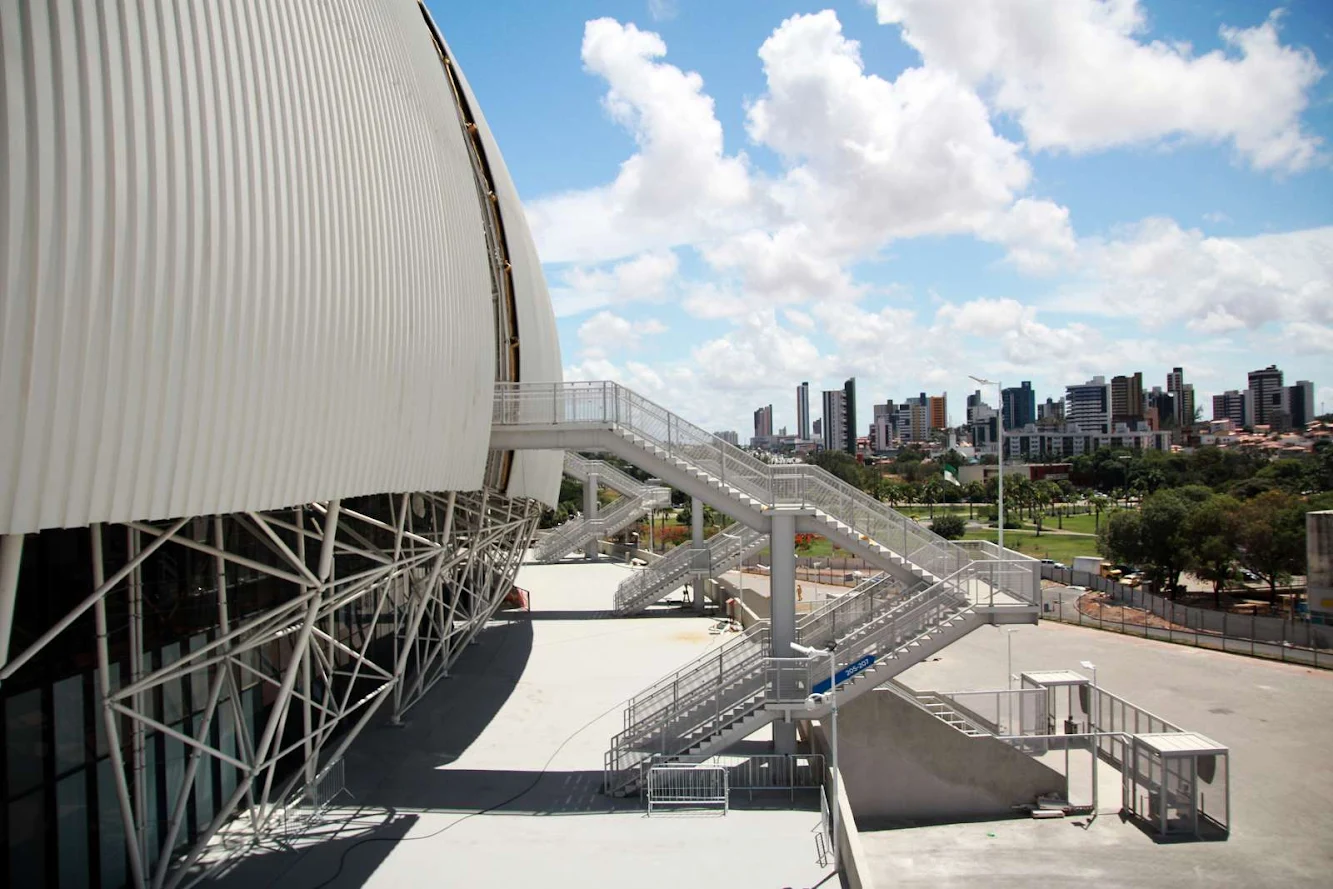
The Arena das Dunas in Natal, Rio Grande do Norte, which will host four group stage matches during the 2014 FIFA World Cup Brazil, has been inaugurated by President Dilma Rousseff.

The Dunas Arena is designed to be a multipurpose venue. The main stadium will host sports events, trade shows and concerts, and the stadium’s 22,000m2 outdoor plaza will also host events.

The arena’s design is unique. Its façade and roof are integrated and made up of 20 petal-shaped modules, designed to be higher on one of the stadium’s sides, giving the impression that the sand dunes – which are common in the region – are moving. The design also enables more ventilation and light to come into the stadium.

The petal-shaped structures of the roof are made of steel trusses, covered on the outside with aluminum tiles, with thermal and acoustic insulation. Internally, they are coated with a PVC prestressed membrane. The parts are joined by translucent polycarbonate, which allows light to come through.

The Dunas Arena’s roof was also designed to capture rainwater. Gutters collect the water and take it to nine tanks below the lower stands. As a result, up to 3,000 cubic meters may be captured and reused in the lavatories and for irrigating the pitch.

Fans going to matches and events at the stadium will notice a new standard of comfort and safety. In total, there are 21 access ramps to reach each of the four stadium levels, in addition to elevators that connect the indoor car park directly with the 39 boxes.

The Dunas Arena also has four lounges that can accommodate up to 1,000 people, 25 food and drink kiosks, as well as 30 restrooms. A security team in the arena’s command and control center is able to monitor images recorded by 200 cameras with facial-recognition capability in the ground’s external and internal areas.

The PA system is integrated with the stadium’s two 64 square meter screens, allowing for information and match statistics to be clearly displayed to the crowd. Players will also notice improved match conditions.

The Bermuda Tifton 419 grass species used for the pitch is ideal for the region’s hot climate, and the drainage system allows for matches to be played even on extremely rainy days.

With the first row of stands only 15m away from the pitch, fans will be close to the action. In addition, the arena’s lighting system, which uses 306 floodlights, provides uniform and consistent visibility, eliminating shadows and facilitating TV broadcasts using Full HD technology.












Location: Natal, Brazil
Project: Populous
Partners: Coutinho, Grupo Stadia, Diegues e Cordeiro Arquitetos
Project Team: Christopher Lee, Dave Orlowsky
Constructor: OAS
Capacity: 32,000 persons
Cost: 423 R$
Year: 2014